|
For this project, we needed to construct a non-combustible mantle, to go above a large, hot, wood-burning Fireplace Xtrordinair. Since a wood mantle wouldn't be permitted, we turned to concrete, and fabricating one was a much cheaper solution to some of the pre-fab cement based mantles out there, which are also... ordinary and lame! |
|
The size of the mantle needed to be between 8-9 feet long, and thick enough to not look dwarfed on a fairly large wall space. Going with a rock or slate texture, we decided to use with our 8" Slate Liner for face of the mantle. We added a block-out section in the middle of the mantle form, and created a custom crest logo from one of our Logo Stamp products. The mantle form was made from basic melamine, and took about 40 minutes to put together and caulk the corners. We used scrap melamine left over from other projects, but typically a full 4'x8' sheet of melamine is sold at any hardware store for $30-$40. Once the mantle form was created in our shop, we then took the form on-site for the job to create the mantle and eliminate the need to transport the heavier concrete mantle later. We also added a few foam pieces to the bottom of the mantle that had stainless steel trivet bars pushed through the center of. When the mantle is finished, and the foam removed, it will leave a metal rod cemented in place that can be used to hang items from, under the mantle (such as Christmas stockings!) |
 |
| A concrete mantle, 94" long, 8" tall, and 14" deep: That's 6.10 cubic feet of concrete. An 80lb bag of concrete yields 0.6 cubic feet, so this mantle would take 10.15 bags of 80lb concrete... and an 800lb beast hanging from the wall isn't something most would consider doing, without so professional engineering and serious structural support. Which is why we did this project from GFRC- Glass Fiber Reinforced Concrete. |
 
|
We have a recipe page here on our website for mixing concrete and GFRC. Using our GFRC recipe for this project, we came up with our calculations for how much material needed to spray a face coat over the whole mantle surface, and then place fiber-rich backer material over it, to build the overall thickness to 3/4". We then pre-batched this into 5 gallon buckets. Each batch had a bucket with the correct amount of water, and the polymer-curing aid (Polyplex) and SP-7000 Plasticizer. We also had other buckets with the pre-weighed sand, and another with the cement for each batch. A good electric scale is key to consistent quality control, so each batch is the same. Once everything was laid out, it was a simple matter to take a bucket with the water liquid, and add the sand, mixing with a high-torque mixing drill and helix-style mixing paddle. Then mixing in the cement. And for the backer layers, then mixing in the fibers. |
|
First step to GFRC, spray the Face Coat.  We removed the metal straps from the form, so we could spray the cement evenly in the form. Using the Sharpshooter 2.0 to spray the face coat mix makes it easy to angle the hopper down and into a form, since it has an angled adapter between the hopper and sprayer. It also has an adjustable orifice dial, for quick changes of the hole the spray needs to pass through. A stiffer cement mix can spray easier through a larger hole, while a thinner mix can benefit from a smaller hole size. For this piece, we used the 1/4" orifice size on the sprayer, and around 40 psi on the compressor. 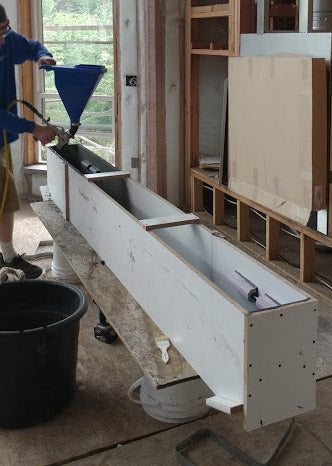 A tip for spraying GFRC face coat is to start on the far side of a form and work towards you (or in a mold shape such as this mantle, start at the bottom and work up). The reason is, as you spray, there will be some overspray and loose sand that will get blown around, and if you start close to you, the sand will all blow into the rest of the form and pile up in the corners. This sand is missing most of the cement and bonding agents from the mix, so will be a weak area, and usually not solid or smooth on the finished piece. If you start far (or bottom) then as this looser material gets blown around, it will get left on top of the face coat layer, and not affect the finish of the piece, or the strength of those areas. |

|
After spraying the face coat, we immediately cleaned out the hopper sprayer, and began mixing another batch of the cement mix, this time adding the chopped AR glass fibers at the end. Using this backer material, and a good pair of rubber gloves, we hand packed a layer inside the form, about 3/8" thick. Then placed a piece of fiberglass scrim fabric, and more backer cement mix. The total thickness was around 3/4" which comprised of about 1/8" of face coat, and a total of 5/8" of backer material. |
| 16 hours later, we stripped off the forms. The center of the mantle needed some more 'rib' supports we felt, so added a few more simply by cutting some wood and gluing in place with some liquid nails. | 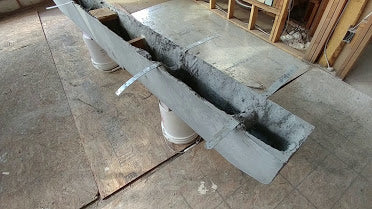 |
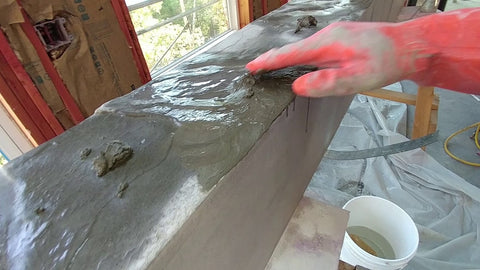 |
There were a few imperfections and small voids to be filled, using a cement Slurry mix. After applying the slurry and forcing it into the small holes using fingers, a damp sponge was used to wipe up the excess slurry. In a few areas, the imperfections were large enough that we applied a second coat of slurry, and allowed to dry an hour and then lightly sanded smooth with 200 grit sandpaper. |
| In order to bring out some of the detail and recessed areas in the slate, we used a water-based concrete stain the following day. This mantle was stained using the Waterbased Stain product, in Black color, but diluted 10:1 with water (10 parts water, 1 part stain) in order to achieve a subtle color effect. |
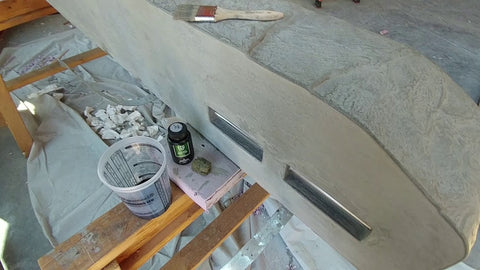 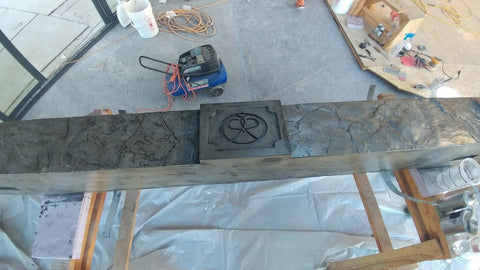
|

|
Once the stain was dry, we lightly wiped the surface with paper towels to remove any stain residue. We then sealed the concrete with the XS-327 Sealer, in Matte finish. |
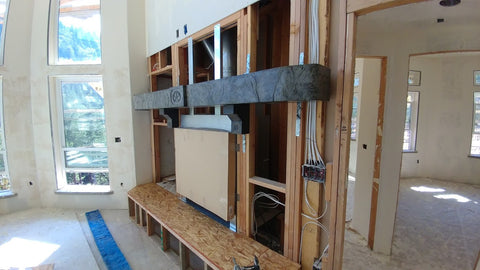 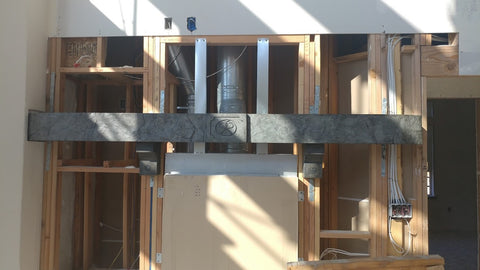
|
We gave the sealer a couple days to cure and then using 3 guys we placed the mantle and secured with screws through the metal straps. |
| In summary, the GFRC Mantle piece ended up using 1 batch of Face Coat (from our GFRC recipe page) and 4.5 batches of the Backer. In all, it ended up weighing around 250lbs. which is drastically lighter than the 800+ lbs. it would have been out of solid concrete. Material costs were around $100 total for the GFRC. The other form materials such as the melamine board, foam pieces, slate liner, and logo stamps were extra, but in our case were left over from previous projects. We also had a few bucks in the water based Water Based Stain and around $5 worth of the XS-327 Sealer. Total labor in this project was just under 11 man-hours, spread out over 5 days. |



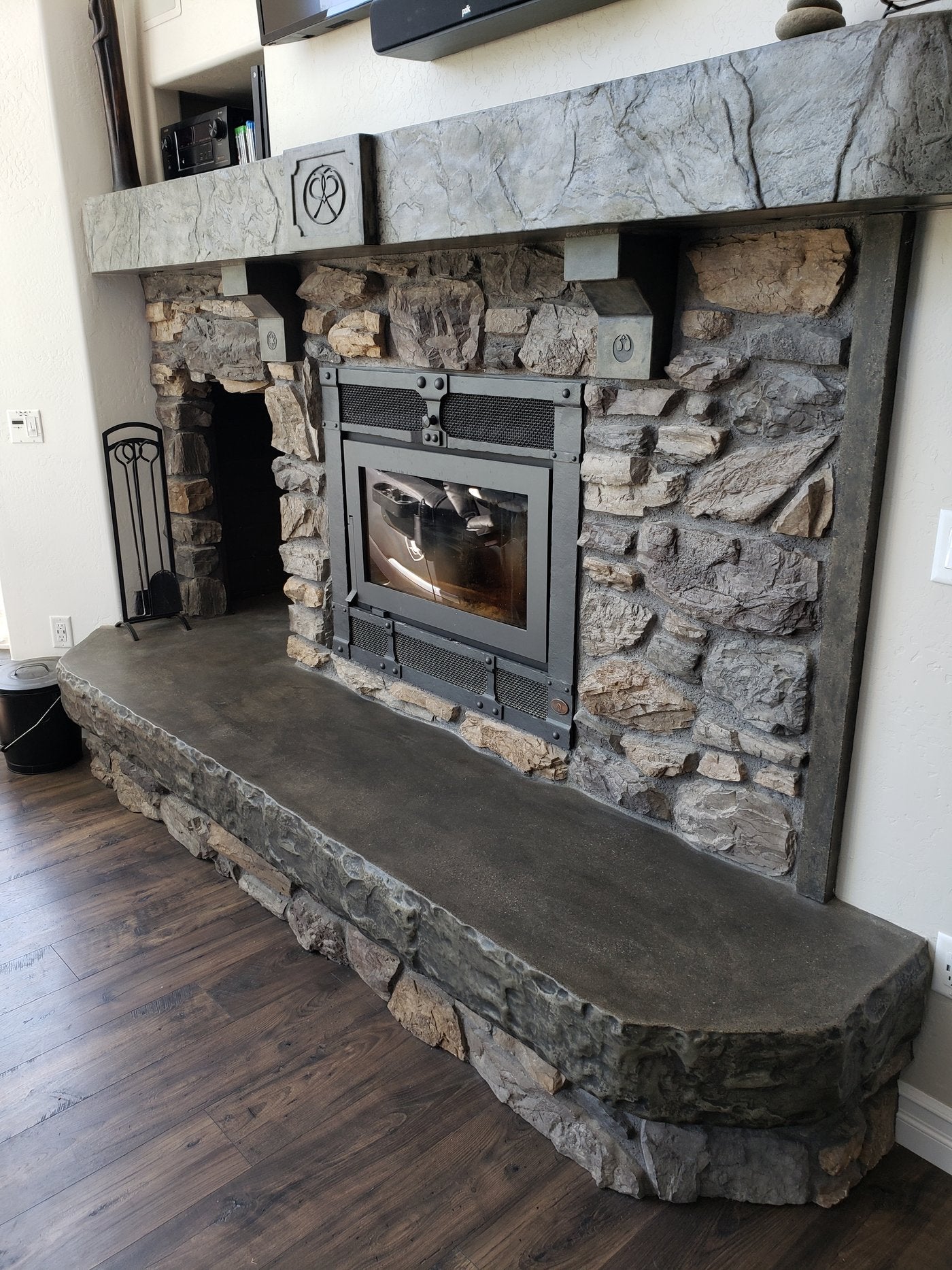

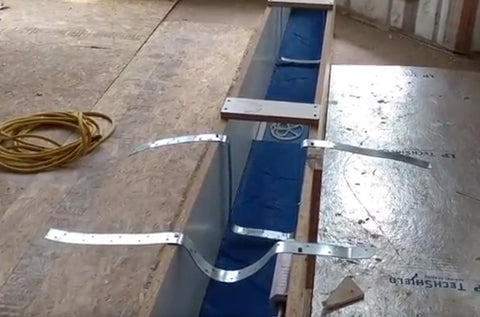
 The finished face coat layer should be under 1/4" thick. Sometimes 'just thick enough' to cover the form material is fine, but 1/8" to 1/4" is normal.
The finished face coat layer should be under 1/4" thick. Sometimes 'just thick enough' to cover the form material is fine, but 1/8" to 1/4" is normal. 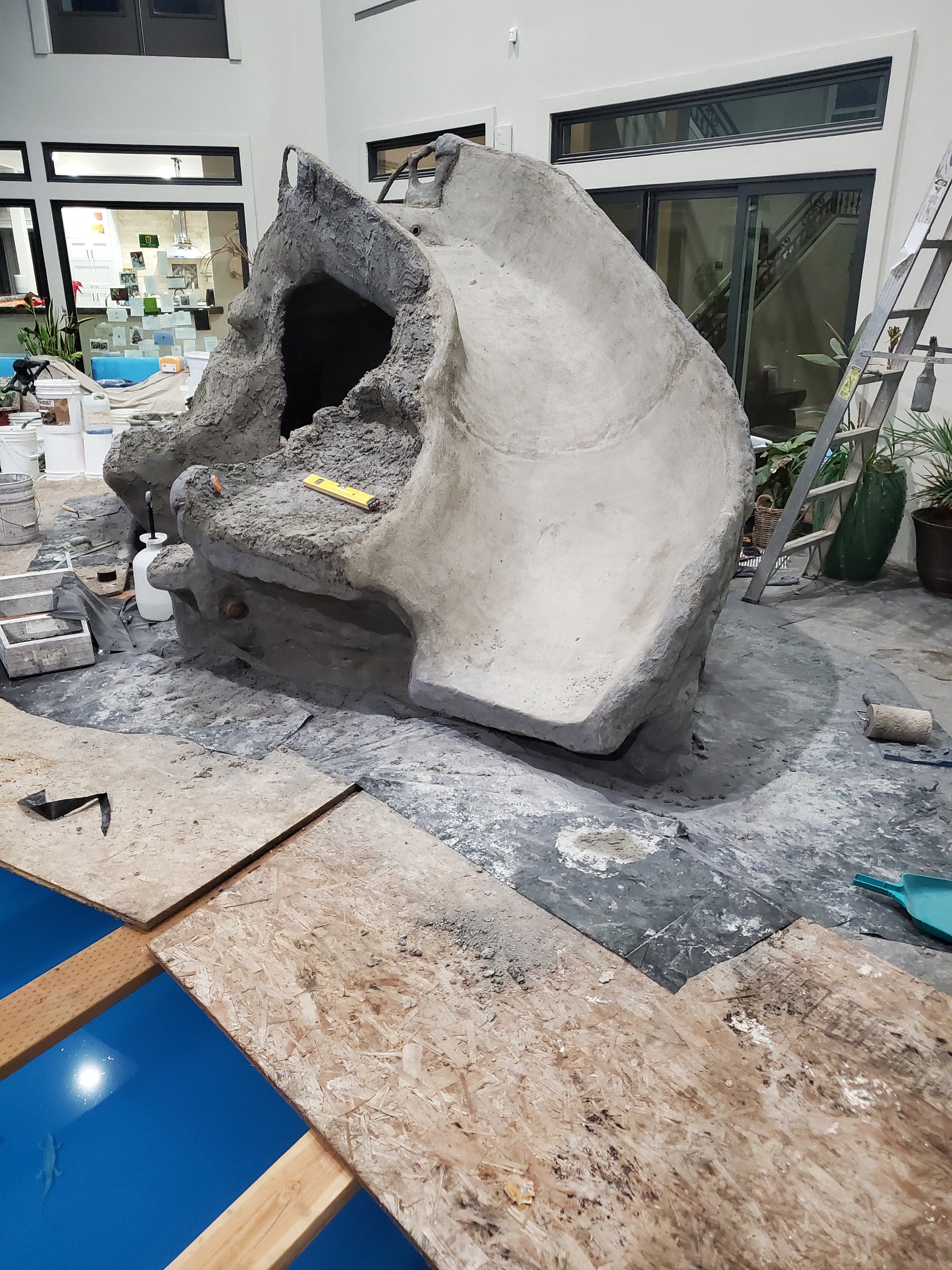
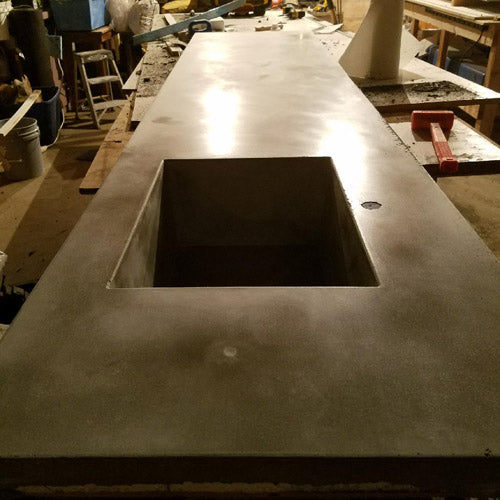
1 comment
Alessandra Finn
This is EXACTLY what I was looking for. The final results are beautiful!
This is EXACTLY what I was looking for. The final results are beautiful!